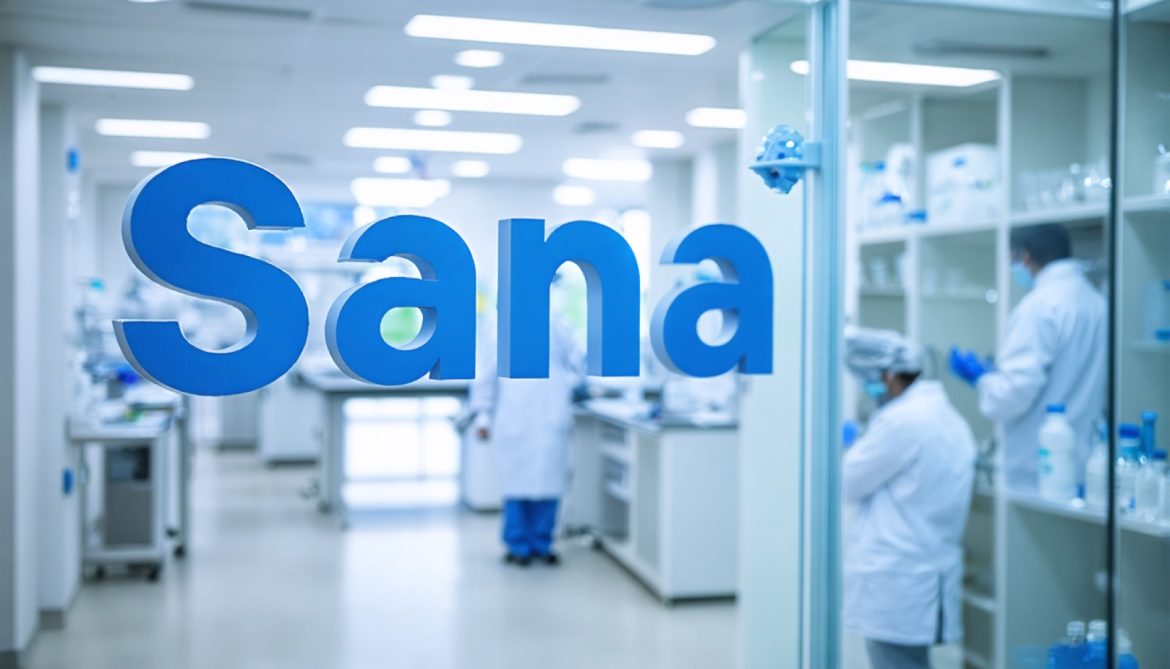- Sana Biotechnology experiences a significant stock drop amid corporate restructuring, raising investor concerns.
- The company scales back oncology projects and reduces its workforce, impacting investor confidence.
- Allegations surface against Sana’s executives for potentially overselling the company’s financial health.
- Sana redirects resources to its diabetes program to extend its cash runway into 2026, sidelining other projects.
- CEO Steven D. Harr highlights the need for focused resource allocation amidst financial challenges.
- The situation highlights the biotech industry’s balance between innovation and financial management.
- Corporate transparency and adaptability are emphasized as crucial for navigating the biotech sector’s challenges.
- Stakeholders consider legal options while observing the developments at Sana Biotechnology.
In a tumultuous turn of events, the stock price of Sana Biotechnology spiraled downward as the company navigated a dramatic corporate shake-up. Investors were left reeling when Sana, a once-promising biotech firm based in Seattle, disclosed significant strategic pivots that included scaling back initiatives in oncology and an unexpected workforce reduction. This revelation catalyzed an immediate wave of concern, punctuated by the startling drop in Sana’s share price.
The biotech landscape is known for its precarious balance between aspirational research and the harsh realities of fiscal management. Sana’s journey exemplifies this precariousness—highlighting the razor-thin line between visionary medical breakthroughs and the demands of financial sustainability. Initially capturing investor enthusiasm with its innovative gene and cell therapy platforms, Sana now finds itself under scrutiny following revelations that its financial health was overestimated. The market reacted accordingly; as of October 2023, shares fell nearly 9% with more turbulence following announcements in 2024.
At the heart of the controversy lie allegations against Sana’s executives for purportedly painting an overly optimistic picture of the company’s financial position and potential for advancing key products. Speculations around the insufficient funds to support ongoing operations and product development have intensified after Sana’s bold but risky decision to withdraw investment from projects SC291 and SC379. These projects, which once held so much promise, have now been sidelined as the firm redirects resources towards its diabetes program—a move critical for extending its cash runway into 2026.
The leadership at Sana, spearheaded by CEO Steven D. Harr, emphasizes the necessity of refining the company’s focus to ensure resources are allocated where transformative clinical impacts are anticipated. This refined strategy, though aimed at conserving the company’s resources, involves difficult decisions, including the loss of valued team members and adjusting timelines for many initiatives.
This upheaval underscores a broader narrative within the biotech industry, where innovation meets the rigorous demand for judicious financial stewardship. As investors weigh their options, the critical takeaway from Sana’s saga remains clear: corporate transparency and adaptability are essential in navigating the unpredictable currents of biotechnological advancement.
With potential legal actions on the horizon, stakeholders are advised to engage with seasoned securities firms to explore their rights and options. As the story unfolds, biotech firms should heed the lessons from Sana—balancing ambition with accountability could well define the future for industry players and the next wave of pioneering medical advancements.
Sana Biotechnology Shake-Up: What It Means for the Future of Biotech
In the wake of Sana Biotechnology’s recent corporate upheaval, numerous questions remain about the company’s direction and what this means for the broader biotech sector. As the dust settles, it’s crucial to explore the ramifications of these events and glean insights into the intricacies of the biotech industry’s financial and operational landscapes.
How-To Navigate Biotech Investments Amidst Corporate Turmoil
1. Conduct Thorough Research: Scrutinize the company’s financial statements and strategic plans. Platforms like the SEC’s EDGAR database can provide public filings, which offer transparency regarding financial health and business strategies.
2. Understand Market Trends: Familiarize yourself with current developments in gene and cell therapy. Understanding the pipeline phases—from preclinical to FDA approval—can provide insights into a company’s future potential.
3. Assess Management’s Credibility: Experience and past success of the executive team in commercializing biotech innovations is a key indicator of future performance.
Real-World Use Cases and Shifts in Focus
Sana’s pivot towards diabetes treatment reflects a significant strategic move. This could signal a broader industry trend where companies may prioritize less volatile therapeutic areas amid financial uncertainties.
– Sana’s Focus: Redirecting resources to its diabetes program aims to push this initiative to market, embodying a calculated risk that many biotech firms may envy for its anticipated market impact.
– Industry Insight: Firms might increasingly adopt similar strategies, ensuring sustained growth while managing risk in an economically turbulent environment.
Market Forecasts & Industry Trends
The biotech sector is expected to evolve significantly:
– Projected Growth: According to market analysts, the global biotechnology market size is anticipated to grow at a CAGR of around 6.4% through the next decade. This includes high growth in segments like gene and cell therapies.
– Financing Shift: With a focus on economic sustainability, companies might drive shifts towards venture capital and strategic partnerships over traditional public offerings.
Controversies & Limitations
Sana’s situation highlights several industry-wide controversies:
– Transparency Issues: The balance between investor optimism and realistic financial projection remains contentious, as seen in legal actions anticipated against Sana’s executives.
– Technological Hurdles: Developing treatments like those sidelined at Sana (SC291 and SC379) involve complex R&D, trial processes, and regulatory hurdles that are not always transparent to investors.
Pros & Cons of Strategic Realignment
Pros:
– Extended Cash Runway: Strategic focus could lead to prolonged operational sustainability.
– Specialization Potential: Concentrated efforts might hasten clinical breakthroughs in diabetes treatment.
Cons:
– Loss of Innovation Opportunities: Divesting projects could mean missing future breakthroughs.
– Investor Confidence: Corporate restructures often challenge market perceptions, impacting stock performance.
Security & Sustainability
Biotech firms can learn from Sana’s pivot to secure their operations by implementing:
– Robust Risk Management: Systematic risk assessments and proactive strategic pivots.
– Sustainable Budgeting: Prioritizing project funding to balance R&D innovation with long-term financial health.
Actionable Recommendations
– For Investors: Engage directly with companies to demand transparency. Consider diverse biotechnology firms to mitigate risk.
– For Biotech Firms: Maintain clear communication channels with stakeholders. Build resilient, adaptable business strategies that can withstand financial and regulatory scrutiny.
Conclusion
Sana Biotechnology’s recent challenges underscore the fragility and dynamism of the biotech sector. As these developments unfold, maintaining a cautious yet open-minded approach will be essential for investors and industry players alike. Balancing ambition and fiscal responsibility is the key to navigating this promising but unpredictable landscape.
To delve deeper into the world of biotechnology investments and trends, visit Fierce Biotech for comprehensive industry insights.



